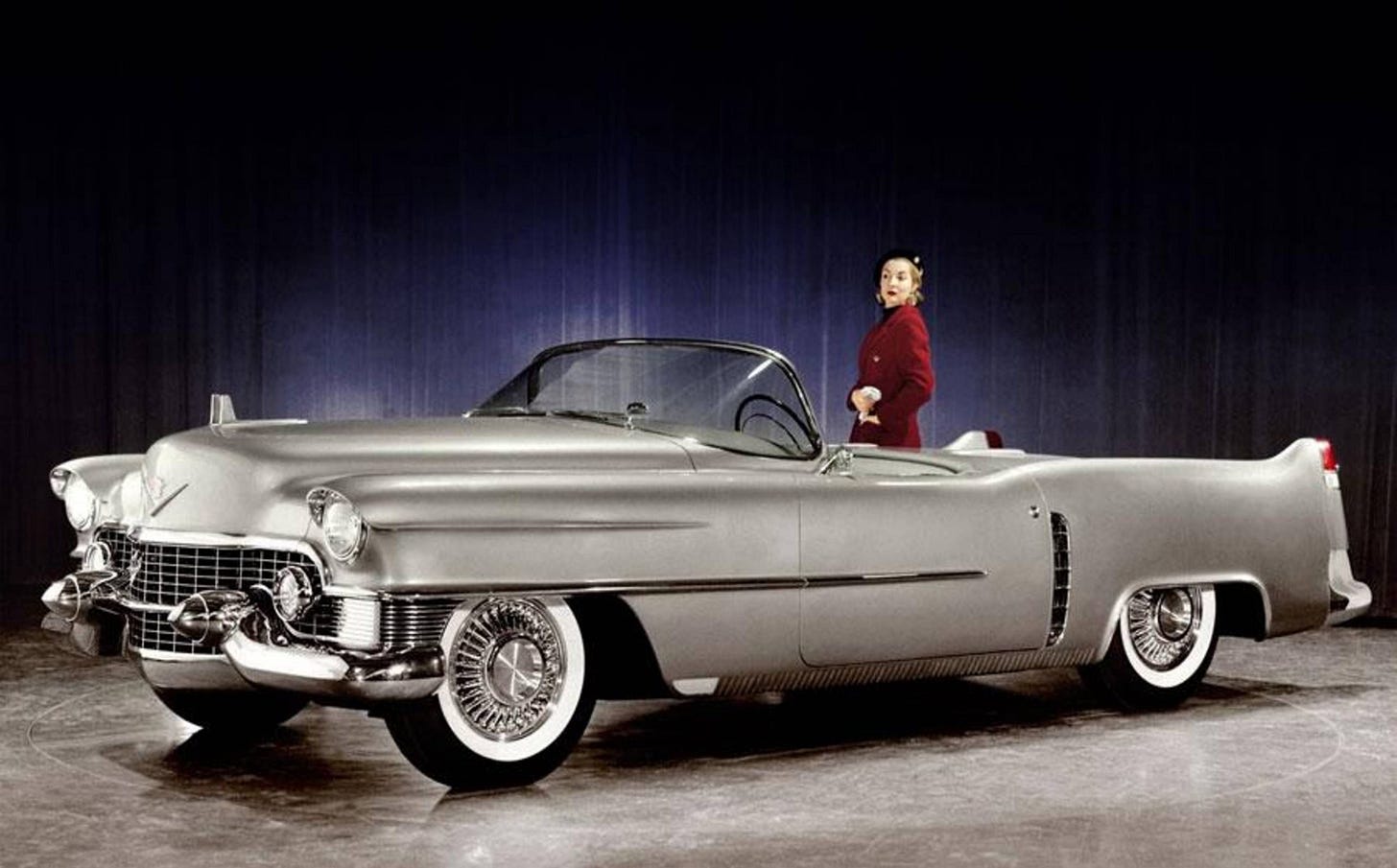The Promise
We used to know what luxury looked like in automobiles. It had chrome, chandeliers, and a Cadillac badge. It was aspirational, theatrical, unapologetically designed to impress. You didn’t belong in the room, and the velvet rope wasn’t subtle about it.
Motorama was long gone by the time I was growing up—but its shadow lingered. In the decades before, GM had mastered the art of spectacle. First came the Parade of Progress in the 1930s—a rolling celebration of science, tech, and modern life. Then came Motorama, GM’s postwar dream show—spotlights, concept cars, and Cadillacs spun like crowns on a turntable. These weren’t just vehicles. They were dreams on display, bathed in theatrical light and engineered to dazzle. If you played your cards right, you didn’t just buy a car—you arrived. Motorama didn’t just move metal. It moved desire. You knew what the product meant—even if you weren’t the one it was built for.
Of course, that kind of glamor came with limits. The women in those ads weren’t behind the wheel. They were draped across the hood. The fantasy was clear: male, white, suburban. A new car promised freedom, but only for those who already had it. And yet—even on the outside—we felt the pull. We wanted in.
Sparkle
And we got in. We started buying the cars, designing them, building them, leading the companies. And when we did, the tone shifted. Less romance, more responsibility. Less ceremony, more efficiency. It was a necessary evolution. But I keep wondering: when the women entered the room, why did the feeling disappear? Why did we let luxury stay alive in handbags and jewelry—but not in cars? Why do we still allow sparkle in stilettos, but not in sheet metal?
We still treat ourselves. To a very expensive handbag—definitely a want, not a need. To perfume that lingers longer than logic. To the little indulgences that make us feel more like ourselves—like treasures that come in tiny blue boxes, or lipsticks that click open to reveal a mirror and a moment. We know the difference between utility and desire. And we’re not afraid to choose desire.
Somewhere along the way, progress started sounding like a project brief. In corporate hell, everything is supposed to be rational now. Sleek. Sustainable. On-message. But Bitches, you and I both know—people still want to feel something. A little drama. A little risk. A little shimmer that makes you look twice—and maybe even want something again. A car might be smarter today, but does it stir the soul? The product launches are still happening. The ads are still running. But the goosebumps? The anticipation? That sense that you’re stepping into a future that actually sees you, makes room for you, wants you? That’s harder to find.
I’m not asking for tailfins and martinis. I’m asking for a new kind of luxury—one that turns heads, yes, but also makes the sisterhood smile. Not nostalgia. Not noise. Just presence, precision, and a glint of something that doesn’t need to be explained—because we already know.
They once built dream cars for men with corner offices. Let’s build the next ones for women who see the shimmer—and nod.



